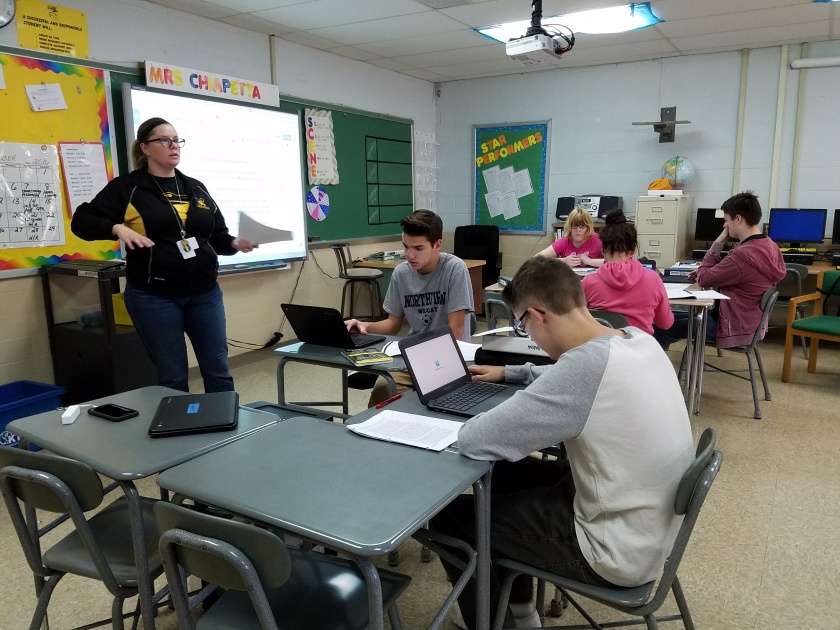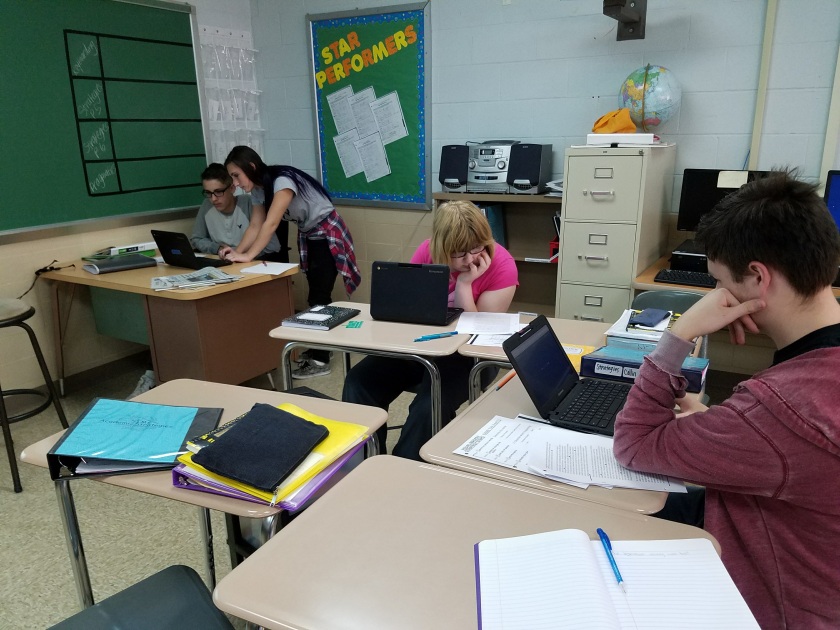It’s Friday, and Northview just finished a homeroom-based safety drill, so the students walking into Heather Chiapetta’s fifth period Academic Strategies 2 class are understandably riled up. They spread around the room, talk cheerfully and randomly (including several questions about whether I am a sub or a student teacher), and jump in and out of their cell phones. The bell rings, and Heather focuses them on a bellringer revision activity: “Edit the sentence: ‘THe Homeroom activity he was fuun?’” After their excited discussion of the egregious errors in the sentence, Heather gets to the real work of the day: using verbal skills to demonstrate comprehension of imagery in literature, a task that will merge SIM strategy with Chromebook technology.

Heather is helping her students develop an understanding of descriptive writing and author’s purpose through a straightforward technique: She finds a text and marks it every so often with a dot that indicates a stopping point. The student reads to that point and stops. Then, he or she discusses the descriptive imagery presented in the text and adds to it with their own visualization. So, for instance, if an author just wrote “The sun rose over the mountains,” the student might comment on what color that turned the mountains and sky, or what the clouds looked like, or the temperature of the air. The point is for students to engage with the text through their own creativity, not merely to expose their eyes to the words.
Heather is running the activity with the support of a Chromebook app called MicNote, a simple tool that records a student’s voice while allowing them to take notes on an associated document. The students speak directly into their Chromebook microphone, producing a file easily shareable with Heather through Google Drive. Heather then responds to the recording with an analytical grading rubric.

Today, the students each grab their text, an excerpt from Harry Potter and the Sorcerer’s Stone, pull a Chromebook from the cart, and find a comfortable place to record. This is not the first time Heather has run the activity, and students need little prompting on the work. In fact, the students set up for their work amazingly well, shuffling off the post-homeroom frenzy. Silence descends as someone waits for the first student to begin recording, but as soon as that student does, the rest follow suit.
Student Recording
The recording seems timid, a sharp contrast to the students’ earlier gregariousness, but no student stops. No student fails to complete the activity. And, even more than that, no student needs serious support in understanding the activity. The technology does not take center stage. Heather’s SIM strategy holds that position as each student considers what they wish to add to Rowling’s descriptions.

As I’ve discussed in previous teacher showcases, employers have reported a need for better verbal skills in their employees. Heather is seeing that and acting on it. Her classroom is becoming a space where students that love to use their voices for socialization and play use them for critical reflection. But, instead of the intimidating environment of whole class discussion or student presentations, the MicNote work here allows and requires each student to find their own voice and make it work.

